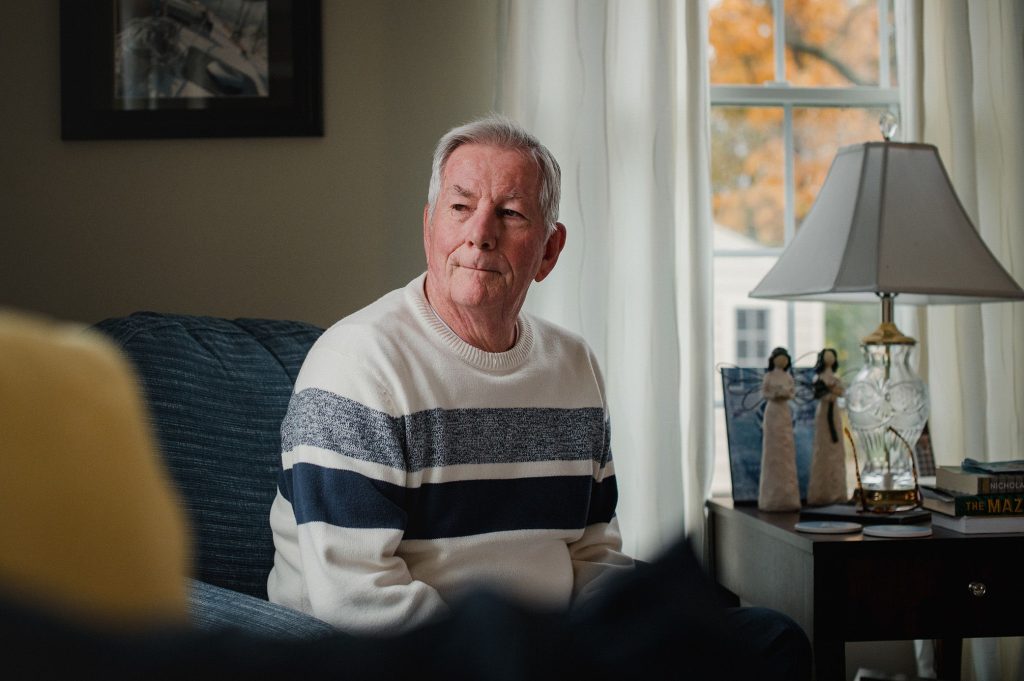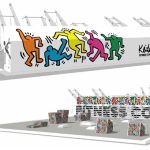by Carter Walker of Votebeat
Photo courtesy of Hannah Yoon / For Votebeat
This article is made possible through Spotlight PA’s collaboration with Votebeat, a nonpartisan news organization covering local election administration and voting. This article is available for reprint under the terms of Votebeat’s republishing policy.
In 2022, when the judge of elections at Jay Schneider’s township polling place asked him to help out, he didn’t see it as that big of a deal.
Just check a few people in, give them their ballots, and if there’s any problem, call over the judge of elections — the official title for the lead polling place official — to deal with it.
“As a poll worker, if you’re not the lead dog, you just take care of the plain vanilla stuff,” he said.
But now, Schneider will be the lead dog. When health concerns this year sidelined the elected judge in Caln Township, near the center of Chester County, he asked Schneider to step up into that role for the Nov. 7 municipal elections.
“‘What the hell am I doing?’” Schneider asked himself when he agreed to do it. “You don’t know how much responsibility is there, and you don’t want to screw it up.”
Poll workers are a critical part of election infrastructure. They are the boots-on-the-ground personnel who run polling places, setting up equipment and checking in voters at more than 9,000 precincts across Pennsylvania.
A judge of elections is the glue that holds all those precinct operations together. These hyper-local officials can either be elected or appointed to fill vacancies, and they’re in charge of key security measures like tracking numbers of voters and submitting returns to the county.
One of the reasons it was a somewhat unexpected role for Schneider to step into was that in 2020, a chaotic year for Pennsylvania elections, he harbored some doubts about just how secure the voting process was.
But today, as he prepares to take charge of his precinct, he feels differently.
Becoming a judge of elections required Schneider to go through comprehensive training from his county’s election department. He saw the process from the inside. And now, he told Votebeat and Spotlight PA, he feels confident that the kind of major fraud that was so widely discussed in 2020 just isn’t possible.
‘End of the world’
Schneider, 76, is a near-lifelong resident of Chester County. He grew up in Malvern, a once semi-rural borough on the eastern side of the county and now a bustling Philadelphia exurb, along what is known as the “main line,” a reference to the railroad line that heads west out of Philadelphia.
“When we moved to Malvern in 1954, it was like the end of the world,” he said. “My mom was like, ‘What are we doing out here in the middle of nowhere?’ Now it’s like La La Land.”
At Great Valley High School, where he graduated in 1964, he was a member of the track team. In his photo in ‘The Musketeer,’ the school’s yearbook, he’s wearing a checked sports coat and tie with his hair parted to the right, the same way it is today.
For his senior quote, he chose a line from John Milton’s Paradise Lost: “Abashed the devil stood.”
Schneider spent his 46-year career in software development, working for TV Guide, Hershey Foods, the American College of Physicians, and on developing payroll software for public schools in New Jersey.
“So when I see computers now, I say, ‘I don’t want to see computers anymore.’”
Since retiring in 2016, he’s described himself as “a project kinda guy,” keeping himself busy with tasks like refinishing the basement, helping his friend build a deck, and building dining room tables for himself and his daughter.
While Schneider, a registered Republican, is a regular voter, he said he was never really civically engaged beyond that until his local judge of elections asked him to be a poll worker.
‘Really locked down’
After the 2020 presidential election, Schneider had some concerns.
“To be honest, when the 2020 election came around, I was thinking, ‘This seems a little sketchy, what’s been going on. There’s some shenanigans going around and around the country,’” he said. He was suspicious when he received multiple ballots in the mail.
But as he has become more familiar with the process and its built-in checks and backstops, that initial distrust has faded.
Now that he’s seen how it all works, he says, “it’s pretty impressive.” He was particularly struck by the requirement for two workers to sign off on each step of counting a mail ballot
“There’s a lot going on. A lot of checks and balances and things you have to be aware of,” he said.
Beyond his experience at the polls and in poll worker training, Schneider has gotten an inside look at other parts of Chester County’s election operation this fall. He is part of a group of election workers organized by the county’s election director, Karen Barsoum, to help with special projects.
One such project this fall was helping Barsoum stage a “mock election” for the workers who will be processing mail ballots at the county’s central counting location, part of their training. Schneider helped assemble trays of mock ballots for the workers to practice checking for disqualifying errors before putting them through tabulation machines. Some of the ballot envelopes were purposely seeded with errors, such as missing signatures, to see whether workers would catch them
Schneider said seeing the entire process firsthand gave him more confidence.
“After seeing how things work, at least in this county at the polling places, and seeing [central count], that’s really locked down,” he said.
Barsoum finds it useful that poll workers can personally vouch for elections in the public after seeing the process from the inside, a crucial part of her voter education and outreach strategy.
“So now, hypothetically, if statements are being made about that operation, they would be able to say, ‘Oh no, I actually saw it, and this is what they do,’ so they will be our educators and voices in the community,” she said.
Schneider said his experience as a software developer helped him appreciate the extra safeguard of having a physical ballot the machine tally can be checked against, and he sees tampering with the election outcome as unlikely, if not completely out of the question.
“If I talk about it [to others], I say I think it’s virtually impossible to make any significant changes to what’s going on,” he said. “I don’t see how you could make any changes, to tell you the truth.”
Practice makes perfect
When Schneider agreed two months ago to be the judge for his precinct, which has roughly 1,200 voters, he didn’t know everything it would entail. But he tried to soak up as much information as he could at Barsoum’s training classes and read as much of the poll worker manual as possible because he knows that as the election judge, he’s now the one who will have to solve problems at the polls.
“The exceptions are the stressful part of that kind of an operation,” he said, because voters who encounter barriers may be “angry because they can’t vote, and you have to explain why they can’t vote or what they have to do to be able to vote.”
Schneider has been focusing much of his attention on learning what to do when a voter is listed as inactive on the voter roll, needs assistance, has their eligibility challenged, or runs into other one-off situations that poll workers refer to as “exceptions.” Situations like those require specific forms to be filled out.
At a training for judges of elections, Barsoum showed attendees a tote bag her staff had put together. The black, cooler-sized bag contains items judges will need on Election Day, including scissors, small American flags, “I voted” stickers, a clipboard, extension cords, and various smaller bags for surrendered mail ballots, spoiled ballots, and other ballots that cannot be counted.
In the larger section of the bag are various color-coordinated folders containing all the documents judges will need throughout the day. Many of the folders contain forms for the various exceptions Schneider has been studying, such as for an inactive voter. Schneider said he isn’t too nervous about the new role, but these exception forms have been a challenge.
“I thought, ‘I’ve never seen these forms, I don’t know how to fill them out,’” Schneider said.
To overcome this, Schneider printed out the forms from the election manual and has been studying them. This year, Barsoum will also have a call center set up on Election Day so that judges have a place to turn when they have questions.
When asked what he was most looking forward to on Election Day, he said, “eight o’clock,” with a chuckle, referencing the time the polls close.
In her training, Barsoum has stressed the importance of perception, Schneider said, telling workers not to go jumping up and down if they see something that might be wrong or if they’re happy about something.
“Because there’s some crazy people out there and all kinds of conspiracies about what’s going on, or what they think is going on,” Schneider said. But he’s also happy that Barsoum has emphasized transparency in everything she does, including allowing the public to see the central count procedure in person.
“That’s a lot of daylight,” Schneider said. “I think a lot of people in this country have had some questions about the 2020 election, and if they see this, it’s like, ‘Hey man, there’s no way to mess around with this, mess it up.’ I certainly feel like that.”
BEFORE YOU GO… If you learned something from this article, pay it forward and contribute to Spotlight PA at spotlightpa.org/donate. Spotlight PA is funded by foundations and readers like you who are committed to accountability journalism that gets results.




